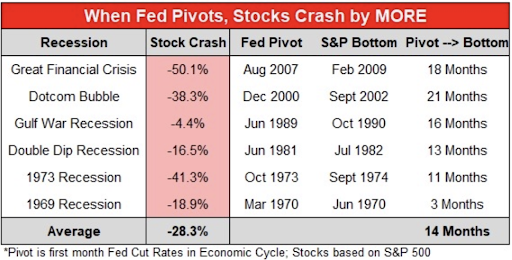What is the S&P 500 and how does it work? If you find yourself asking that question, you’re in the right place…
The S&P 500 is typically considered Wall Street’s favorite index because it’s generally the best indicator of how U.S. stocks are performing. Since growing to include 500 companies in 1957, the average annualized return is 10.67% (as of January 2022).
Over the past five years, the S&P 500 has been up four years and down one.
The index gained 19.42%, 28.88%, 16.26% and 26.89% in 2017, ’19, ’20 and ’21, respectively, while shedding 6.24% in 2018.
What Is the S&P 500 and How Does It Work?
The S&P 500 is a stock market index that includes 500 of the largest companies in the U.S. The index technically contains 505 stocks because it includes two share classes,A&B or C, of stock from five of its component members. The S&P 500 also includes all 30 companies that make up the Dow Jones Industrial Average.
The index was officially introduced in early March 1957 by Standard & Poor, and later acquired by McGraw-Hill in 1966. The S&P Dow Jones Indices now owns it through a joint venture between S&P Global, formerly McGraw Hill Financial, CME Group and News Corp., the owner of Dow Jones.
The S&P 500 is weighted by free-float market capitalization, meaning more valuable companies account for relatively more of the index. To qualify for the index, a company must be in the U.S. and have an unadjusted market cap of at least $8 billion. The constituent committee for the index may also consider other factors including liquidity, public float, sector classification, financial viability and trading history.
Additionally, at least 50% of the issued stock from the company must be available to the public, and the stock price must be at least $1 per share. Included companies in the S&P 500 must also file a 10-K annual report that covers the financial well being of how they’re performing.
The 10 largest companies that make up the S&P 500 (as of January 2022) include:
- Apple Inc. (Nasdaq: AAPL).
- Microsoft Corp. (Nasdaq: MSFT).
- Amazon.com Inc. (Nasdaq: AMZN).
- Alphabet Inc. Class A (Nasdaq: GOOGL).
- Tesla Inc. (Nasdaq: TSLA).
- Alphabet Inc. Class C (Nasdaq: GOOG).
- Meta Platforms Inc. (Nasdaq: FB).
- Nvidia Corp. (Nasdaq: NVDA).
- Berkshire Hathaway Inc. Class B (NYSE: BRK.B).
- Johnson & Johnson (NYSE: JNJ).
To invest in an index like the S&P 500, you purchase shares of index mutual or exchange-traded funds that seek to mimic the performance of the index.
S&P 500 index funds and ETFs are among the least expensive fund choices available, and provide easy diversification. In fact, Warren Buffett has long said if you want to invest in the market, just buy index funds and bet on the U.S. economy’s continued growth.
Buying just one share of an S&P 500 fund provides you with indirect ownership of all 500 companies. The most liquid S&P 500 fund is the SPDR S&P 500 ETF Trust (NYSE: SPY).
Here is a five-year chart of the SPY…
As with any investment, it’s important to know your risks. The potential for profit and losses will determine your success, but you can mitigate some of the risk by doing your homework, setting stop losses, and taking profits when you feel they have been maximized.
That’s why it’s important to know exactly what the S&P 500 is and how it works. Click here to learn about the Nasdaq, and click here to read about the Dow.




